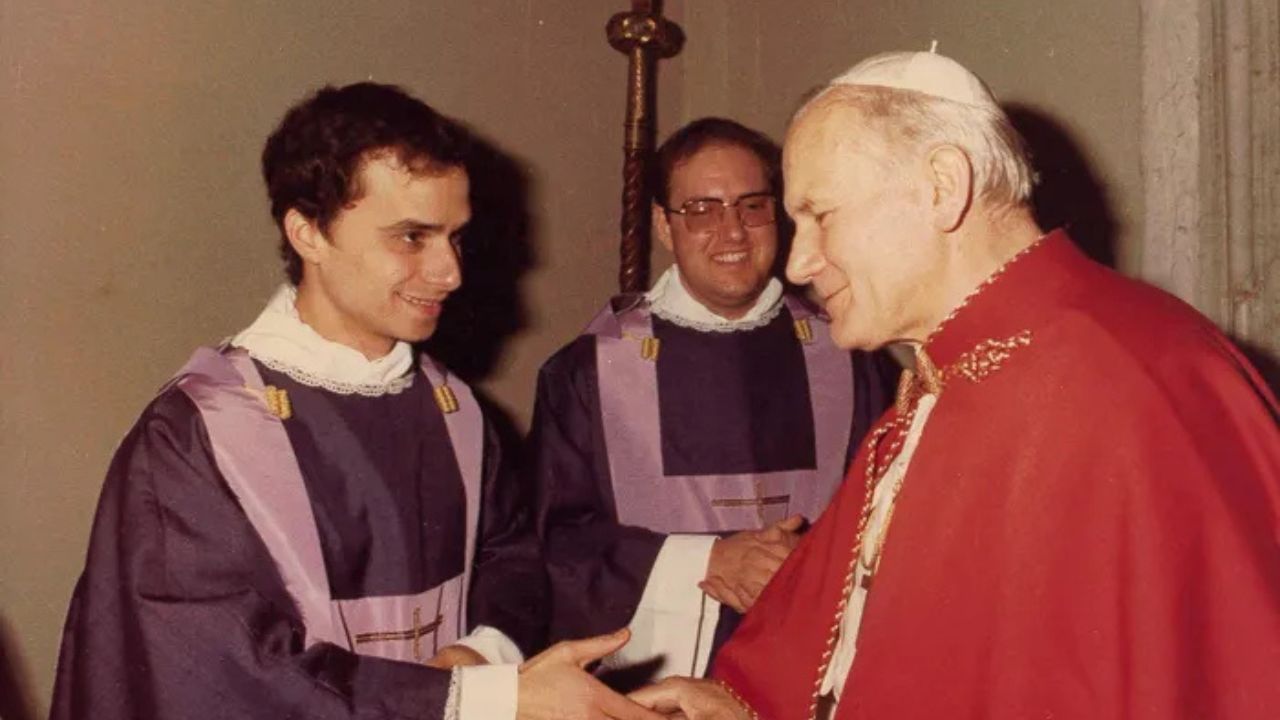"With you I am a Christian, for you I am a bishop": with these words, which have gone down in history, Saint Augustine described the mysterious and weighty dignity of the priestly ministry. A concise expression that encapsulates all the burden and all the love of one who has accepted to serve the Church. Today, forty-three years after his priestly ordination, which took place on 19 June 1982 in the Roman chapel of Saint Monica, Pope Leo XIV continues to bear witness to that "yes" spoken with fear and obedience — just like his spiritual father, Augustine.
The saint’s resistance: a ministry embraced out of obedience
For Augustine, the priesthood was not a desired goal. He feared it. He even tried to avoid it, like many other saints — Gregory the Great, Ambrose, John Chrysostom — who loved the contemplative life and were afraid that pastoral activity might stifle their intimacy with God. And yet, Augustine accepted not out of ambition, but in obedience to the Lord. Servus Domino contradicere non debet — the servant must not contradict the Lord.
But he accepted in his own way, uniting what had until then seemed irreconcilable: monasticism and priesthood. Augustine wanted to remain a monk, even as a priest. Indeed, he made the monastery the womb of his priestly spirituality, initiating a new and fruitful model in the Church: the priest as a shepherd of souls and brother in common life, poor, chaste, dedicated to prayer, study and service to the poor.
The model of a poor and fraternal Church
In the bishop’s residence in Hippo, Augustine transformed the episcopal house into a monastery for clerics, where life was lived in the style of the Acts of the Apostles: everything was held in common, nothing was owned privately. Authority sprang from charity, never from power. The bishop himself shared meals, clothing, and labours. His poverty was a choice, not out of ideology but out of Gospel fidelity. “I do not wish to receive anything,” he said, “that I cannot give to a brother in need.”
For Augustine, the priest is one who leads from within, not from above. He is not a sacred official, but a Christian who has made himself a servant, ready to renounce his own peace for the needs of the Church. In his Letter to Eudosius, Augustine writes: “Do not put your peace before the Church's necessity.”
Leo XIV: 43 years in the spirit of Hippo
The ministry of Leo XIV — from his religious origins to his pontificate — is imbued with this spirit. It is evident in the sobriety of his style, his preference for the lowly, his magisterium rich in pastoral charity, and also in his emphasis on common life, co-responsibility, and evangelical poverty. He is a shepherd who has lived among his own, not above them.
Like Augustine, he has lived the tension between contemplation and action not as a conflict but as a fruitful integration. Like Augustine, he has believed that only a priest who is truly a brother can be a father. Like Augustine, he has understood that the holiness of the priest is not measured from the pulpit, but around the common table, through sobriety, humility, and patience.

For a Church renewed from below
The true renewal of the Church, taught Augustine, does not come from structures, but from conversion of hearts, beginning with her ministers. That is why, in the monasteries he founded, Augustine nurtured generations of priestswho were poor, learned, and chaste, and who were sent to African dioceses as new leaven. In this way, the African Church was reborn, threatened as it was by the Donatist schism.
In the same way today, Leo XIV — in the heart of a Church wounded by divisions and an identity crisis — discreetly points to the same path: reforming hearts before reforming structures, starting from a renewed priestly conscience.
In the footsteps of Saint Augustine: 43 years of fidelity and service
To celebrate forty-three years of priesthood is not only to give thanks for a long and faithful journey, but also to contemplate the ever-new mystery of the ordained ministry. The priest is never a man who has “arrived”: he is a pilgrim among pilgrims, a man for others, conformed to Christ who came not to be served but to serve.
On the day Leo XIV marks forty-three years of priesthood, the heart of the Church looks to him with gratitude and admiration, recognising in his ministry a clear reflection of the spirit of Saint Augustine, to whom he has always sought to conform. Like the Bishop of Hippo, Leo XIV has been — and continues to be — a passionate seeker of truth, justice and grace. The words of Benedict XVI, spoken of Augustine, seem etched into his own story: “Saint Augustine was a passionate seeker of the truth: he was from the beginning, and remained so throughout his life.”
In his youth marked by study, in his years of mission and leadership of the Order, in his hidden service to the Church, and finally in his unexpected call to the Petrine ministry, Leo XIV has always preserved a deep attraction to Christ. Like Augustine, he heard in his heart the tolle, lege — “take and read” — which calls one to read, discern and obey. And like Augustine, he knew how to say his fiat, letting himself be converted day by day by the living Word.
Today, forty-three years after that 19 June 1982, the Pope continues to offer himself to the Church as a man of God for the people of God, knowing — with the wisdom of the saints — that the greatest title one can bear, even from the Chair of Peter, is still and always this:
Servus servorum Dei — Servant of the servants of God.
p.C.P.
Silere non possum